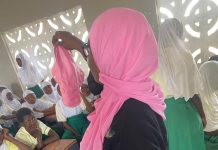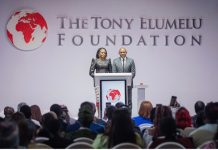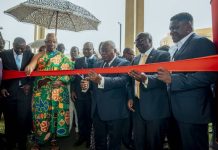ABIDJAN, Ivory Coast, February 2022/ — The African Development Bank (www.AfDB.org), the World Health Organization Regional Office for Africa, and their partners in the Harmonization for Health in Africa Initiative have published A Practical Guide to Value for Money in the Health Sector in Africa.
Global public health is increasingly pitting ambition against limited resources. Africa finds itself faced with two extremes: great expectations for the future, and very little financing for the health sector to count on.
The African health sector remains underfunded. Governments currently invest $4.5 billion[1] in public health capital expenditure versus the estimated $26 billion[2] of annual investment needed to meet evolving health needs over the next decade.
Government health expenditures also represent only 1.9% of GDP in Sub-Saharan Africa, far below the target of 5% suggested by the United Nations Economic Commission for Africa.[3]
But it is not only about money: countries could do significantly better with the resources they have by doing away with inefficiencies, which have a variety of causes, ranging from weaknesses in evidence-based policymaking to insufficient high-impact investments. The Covid-19 pandemic has highlighted these major inefficiencies in national health systems and related health infrastructure across the continent.
The central theme of the guide is seeking greater value for money, or making the most of scarce resources. The guide presents the most common policy initiatives that focus on value for money and emphasizes those that have the greatest likelihood of success. This guide will support health policymakers to further develop, adopt, and sustain innovative solutions to maximize the benefits of investments in health – and, in the process, attract more funding for the sector in Africa.
The guide acts as an accompaniment to the Bank’s Strategy for Quality Health Infrastructure in Africa 2021-2030 (https://bit.ly/3rDOfmQ), which seeks to boost access to health services across the continent by focusing on three categories: primary healthcare infrastructure for underserved populations; developing new secondary and tertiary healthcare facilities alongside specialist facilities; and building diagnostic infrastructure for efficient and effective disease diagnosis across Africa. To enhance value for money in the health sector, the Bank will support its regional member countries through a combination of technical support, knowledge work and policy dialogue.
Click here (https://bit.ly/3J8SX22) to access the guide.
[1] This data is sourced from the WHO Global Health Observatory; the Bank’s Strategy for Quality Health Infrastructure in Africa 2022-2030
[2] This is an estimate calculated by the African Development Bank; the Bank’s Strategy for Quality Health Infrastructure in Africa 2022-2030
[3] The Bank’s Strategy for Quality Health Infrastructure in Africa 2022-2030
About the African Development Bank Group:
The African Development Bank Group is Africa’s premier development finance institution. It comprises three distinct entities: the African Development Bank (AfDB), the African Development Fund (ADF) and the Nigeria Trust Fund (NTF). On the ground in 41 African countries with an external office in Japan, the Bank contributes to the economic development and the social progress of its 54 regional member states. For more information: www.AfDB.org
About Harmonization for Health in Africa (HHA):
Harmonization for Health in Africa is a regional mechanism through which partners coordinate their support to governments in Africa to improve people’s health. The collaborating partners focus on providing support in the areas of Health Financing, Human Resources for Health, Pharmaceuticals and Supply Chains, Governance and Service Delivery, Infrastructure and ICT.






































